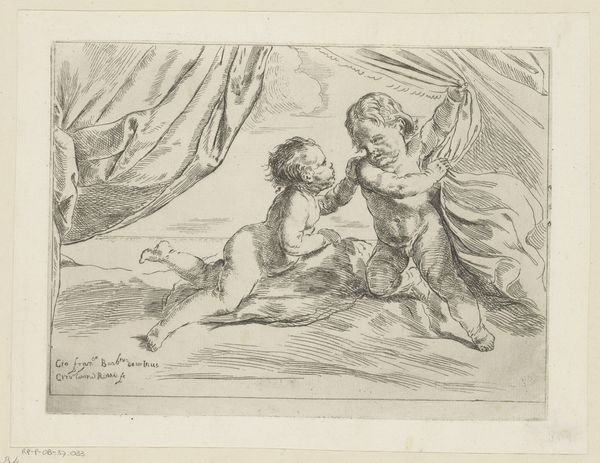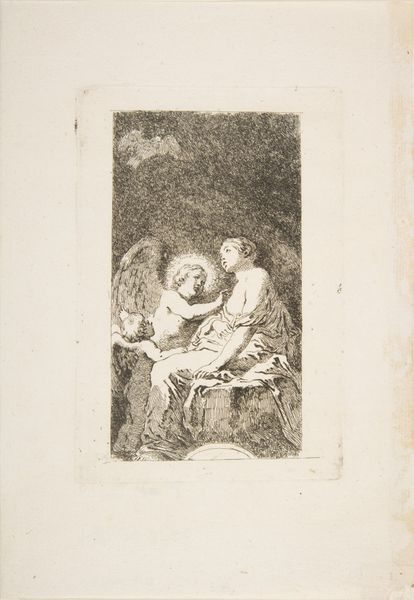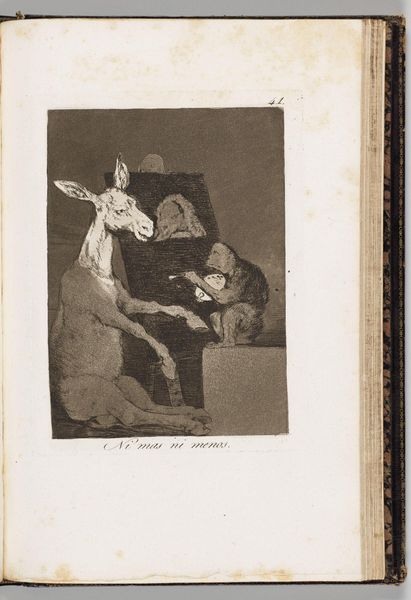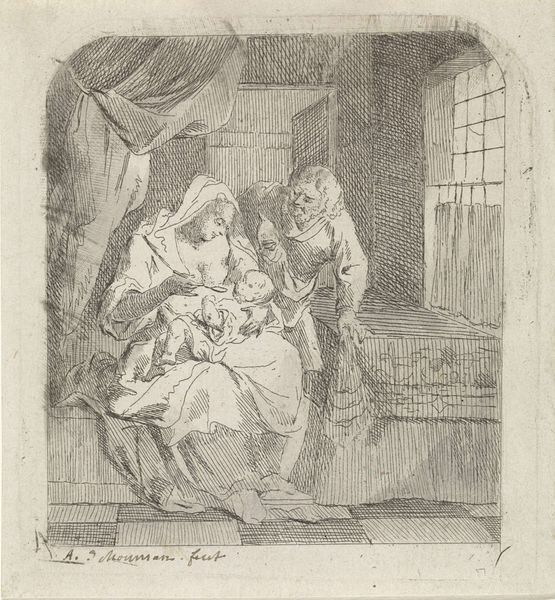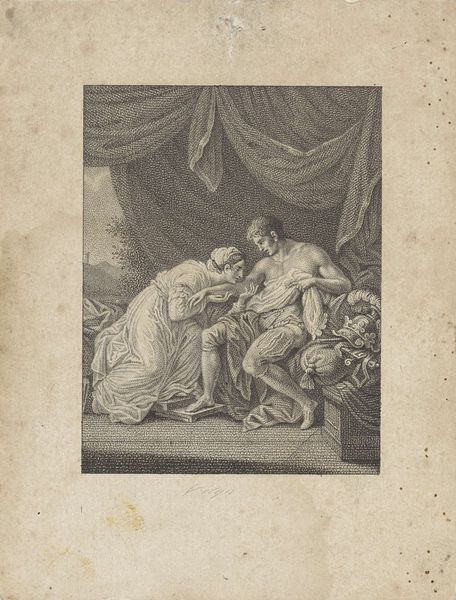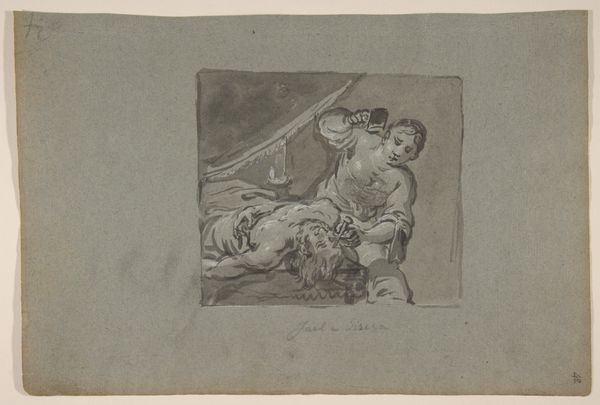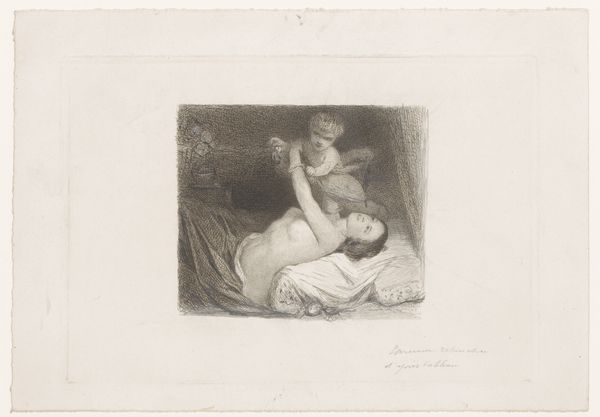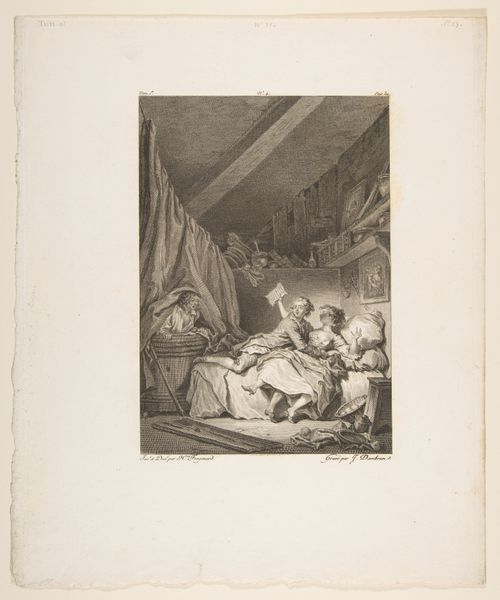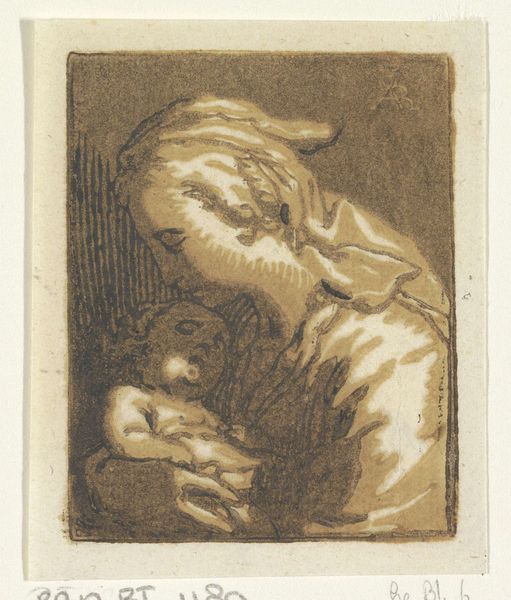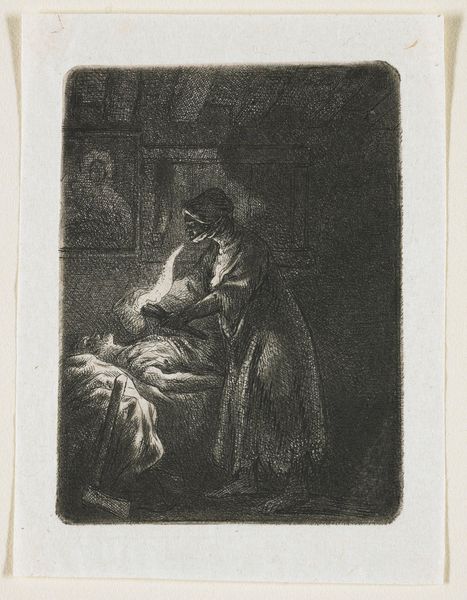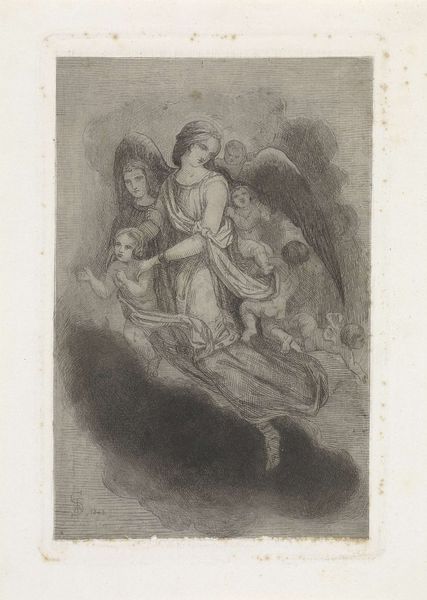
Dimensions: height 96 mm, width 132 mm
Copyright: Rijks Museum: Open Domain
Editor: This is "Rustende Amor," possibly from between 1750 and 1808, an engraving by Pierre François Basan, currently held at the Rijksmuseum. It looks like Cupid resting after causing some mischief. The overall tone seems quite classical, even a little bit sad, given his languid pose. How do you interpret this work in its historical context? Curator: It's intriguing, isn't it? On the surface, it’s a depiction of Cupid, a popular subject that romanticizes love and innocence. But I encourage us to consider it beyond a simple allegorical representation. Think about the period: late 18th century. What was the social function of representations of children and the idealization of innocence during times of upheaval and social change? Editor: That's interesting... Maybe it’s about wanting simpler times. Curator: Precisely. Consider the rise of the bourgeoisie, the emphasis on domesticity, and the construction of childhood as a distinct, innocent stage of life. Representations like this print contributed to and reinforced these social values. What might the arrows symbolize? Is it simply the power of love, or could it be interpreted as a kind of violence, perhaps reflecting broader social power dynamics? Editor: I never thought of Cupid's arrows as violent, but in the right historical context... I suppose symbols are rarely neutral. It seems the print, seemingly innocuous, served in the creation or, perhaps, perpetuation of those period social norms. Curator: Exactly. Even art that appears apolitical is deeply intertwined with social and cultural narratives. Next time, challenge what looks decorative on the surface and consider what role it plays in the grander societal scheme. Editor: This really gives a different perspective and new way to look at engravings, seeing past simple beauty or mythological narrative. Thanks!
Comments
No comments
Be the first to comment and join the conversation on the ultimate creative platform.

